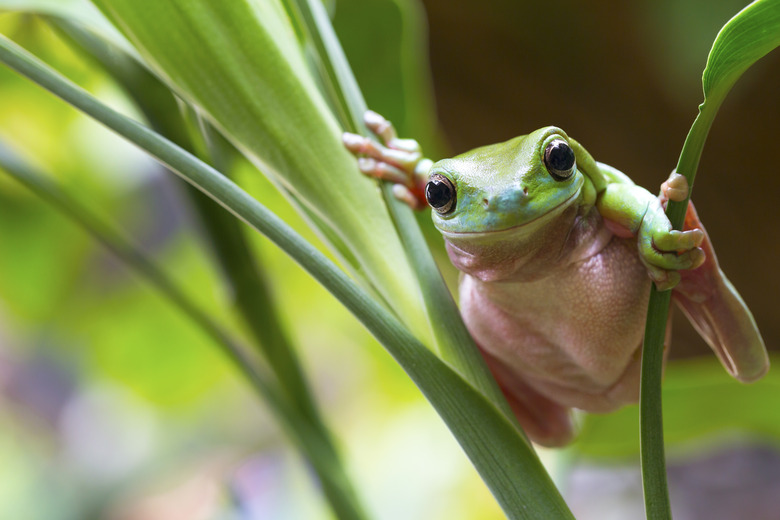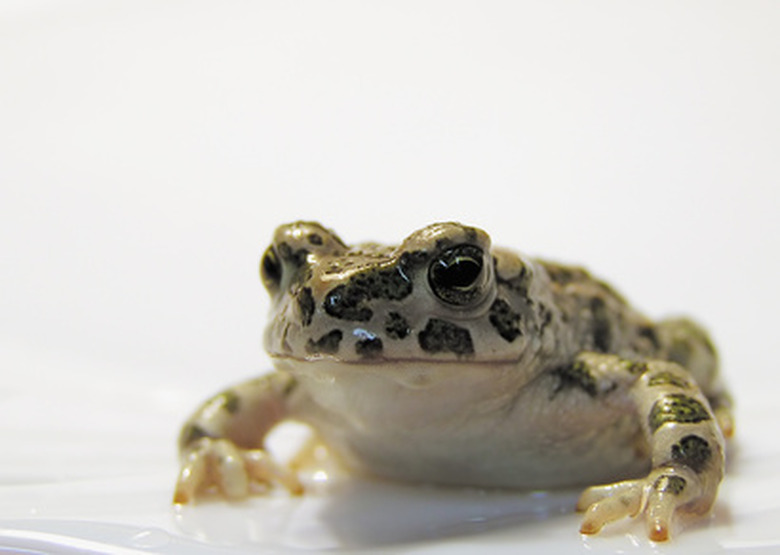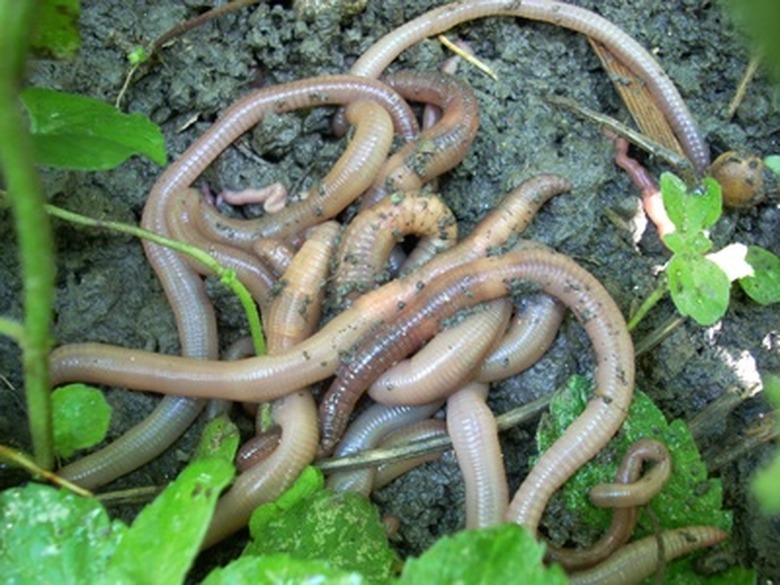Animals That Breathe Through The Skin
Earthworms and amphibians, such as frogs, breathe through their skin. They belong to a group of animals which live on land and have a skin thin enough for gases to pass through. These animals are capable of breathing through their permeable skin, which needs to remain moist. Earthworms remain below ground in the moist soil, while amphibians live in or near water. Animals that can breathe through their skin have moist skin and have tiny blood vessels or capillaries that lie close their skin surface. These tiny vessels transport oxygen to their various tissues and carry carbon dioxide to the outer skin layer.
Amphibians in General
Amphibians in General
The thin, permeable skin of amphibians lacks the protective layer of feathers, fur or scales. These creatures, however, are able to breathe through the entire surface of their bodies. Specific species, such as the lungless salamanders, lack the primitive lungs that other amphibians have and breathe exclusively through their skin. Amphibians also absorb water through their skin and do not need to drink. In areas where water is scarce, amphibians are able to simply absorb any moisture within the soil.
Frogs and Toads
Frogs and Toads
The ancestors of present day amphibians appeared on earth at least 190 million years ago and looked very similar to our modern species. Frogs live in a surprising number of climates, including deserts and the Arctic. Although typically creatures of warm and moist tropical climates, frogs have adapted to the harsh environments of mountain slopes and deserts. The Australian water-holding frog burrows underground and protects itself in a transparent cocoon of its own shed skin. This frog is able to survive for up to seven years while waiting for rain. Although toads are in effect frogs, they posses a number of physical characteristics that true frogs do not exhibit. These include stocky bodies, short hind legs and a dry, warty skin.
Salamanders and Their Larvae
Salamanders and Their Larvae
These amphibians, which are frequently mistaken for lizards, have soft, moist skin covering their entire bodies and tail. Salamander larvae are very similar to frog tadpoles, but their heads are not as prominent, and they possess a feather-like gill structure on the sides of their neck. Salamanders and their larvae prey on insects and small invertebrates, such as fish and frogs. These secretive, small creatures are principally active at night and remain hidden under fallen logs and within moist leaf litter during the day. Salamander larvae begin preying on small aquatic creatures immediately after hatching.
Earthworms and Night Crawlers
Earthworms and Night Crawlers
Although indigenous to Europe, this reddish-colored worm is common in North America, where it has the name night crawler. The bodies of these creatures have segments covered in short bristles, which help the worm move through its burrows. Via their metabolic waste, earthworms transport nutrients and minerals from within the ground, to the surface, while their tunnels aerate the ground. Each earthworm has sex organs of both the male and female and is capable of replacing lost segments.
Cite This Article
MLA
Bolton, Naomi. "Animals That Breathe Through The Skin" sciencing.com, https://www.sciencing.com/animals-breathe-through-skin-7815623/. 22 November 2019.
APA
Bolton, Naomi. (2019, November 22). Animals That Breathe Through The Skin. sciencing.com. Retrieved from https://www.sciencing.com/animals-breathe-through-skin-7815623/
Chicago
Bolton, Naomi. Animals That Breathe Through The Skin last modified March 24, 2022. https://www.sciencing.com/animals-breathe-through-skin-7815623/


